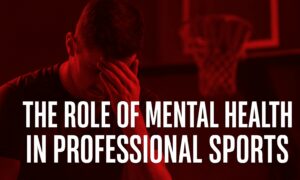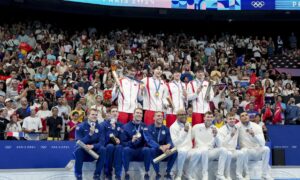As a sports journalist and an individual who has anxiety, the announcement by Naomi Osaka to withdraw from the French Open as a result of unaddressed mental health concerns by the media and the tournament is heartbreaking. No athlete, or person, should have to give up doing something they love because people are unaccommodating for mental health issues.
The narrative around mental health in sports needs to be changed. It is not a weakness or something someone should be punished for, but instead, an opportunity for others to be innovative and show their support for their fellow human beings. We are all just trying to make it through the day and athletes are no different.
I’ve been the one asking questions and holding a microphone to an athlete moments after they exit the field from a stressful match. Every athlete I have come across has been gracious to answer my questions and talk to me, but they do not owe that to anyone.
In the case of Osaka, and other athletes who are extremely not comfortable with this system, I believe there are ways us as media can help them to feel more comfortable.
1. Mental Health Issues from Zoom Fatigue
Zoom fatigue has overtaken many of us by this point in 2021; however, I see this new universal utilization of the platform as an opportunity to change how we communicate with athletes. Instead of shoving cameras and microphones into the faces of tired athletes, Zoom and other methods of video communication could be used to limit the stress and intimidation of post-game interviews.
With breakout rooms, the athlete could even speak to just a few journalists at a time. This would take away the repetition of the same quotes being featured in every article. With technology, we have the ability to improve the experience for both athletes and the media.
2. Written Statements
I understand athlete statements are not as exciting for journalists because the emotional reactions are lost. However, articles are filled with insertions of Twitter posts as quotes and I see this as nothing different. Osaka offered to release a statement following the match in place of interviews and she was denied.
Allowing an athlete to choose how they want to prepare their words and present themselves is the same as writers and journalists allowing editors to critique a piece before submission. Everyone wants to frame their work in the best light possible and written statements should be accepted.
3. Organized Interviews
Instead of the usual unprepared athlete walking into a room full of people eager to secure the “perfect quote”, the interviews should be structured. After the game, journalists should submit their questions via a shared online platform on which the athlete can view.
The player can take some time, maybe a maximum of 25 minutes, to compose themselves and mentally prepare to answer these questions. The order in which they will be asked can be decided upon ahead of the meeting and if further questions arise, they can be submitted onto the platform and the athlete can choose to address them.
4. Athlete-led interviews
Currently, the system involves reporters asking questions to the athlete and them giving a response on the spot. If an athlete is not comfortable with that, athlete-led interviews could be a possible alternative.
What I mean by athlete-led is a pre or post-game conference in which no questions are asked and the athlete instead gives a one-minute or so statement about how they felt about the game, their playing style, or whatever they want. Once they are finished speaking, they leave. The media now has quotes to use, albeit maybe not unique ones, and the athlete is not inundated with questions.
5. Skip the interview
For sports reporters who are used to the current format of always interviewing athletes after a game, this will seem radical. I’m not suggesting that every athlete get a free pass to not speak to the media; instead, I am stating that in extreme cases such as Osaka’s, the media should become comfortable with creating a story despite having any quotes.
If the media are the only thing preventing a player from participating in a game or match, the media should be taken out of the equation. Let the players’ performance speak for itself; the media can get creative with developing more of the story and leave the personal player reactions out of it.
As sports journalists, we are supposed to tell a story that is not ours. In doing so, we should consider how what we do and how we do it affects those we are writing about. No one should sacrifice their mental well-being to accommodate those who are unwilling to accommodate them.
We have an opportunity to step up and alter the relationship between athletes and media from a negative perspective, to one of growth and collaboration. It’s time for a change.









